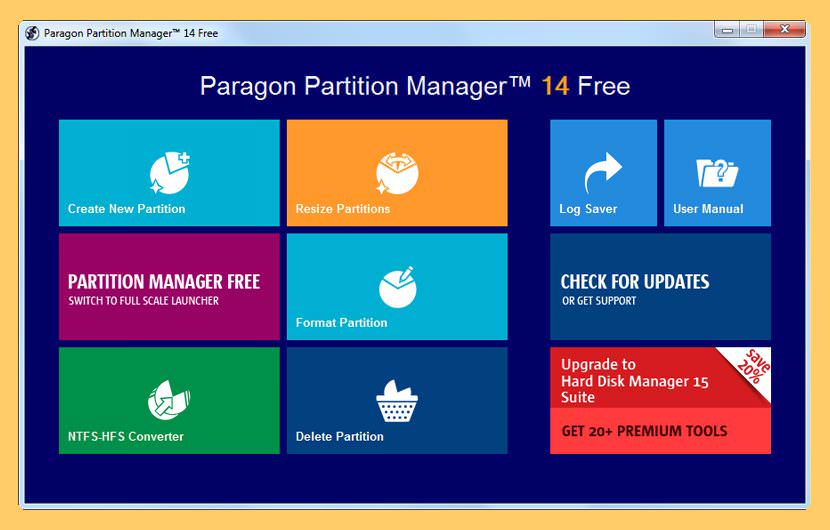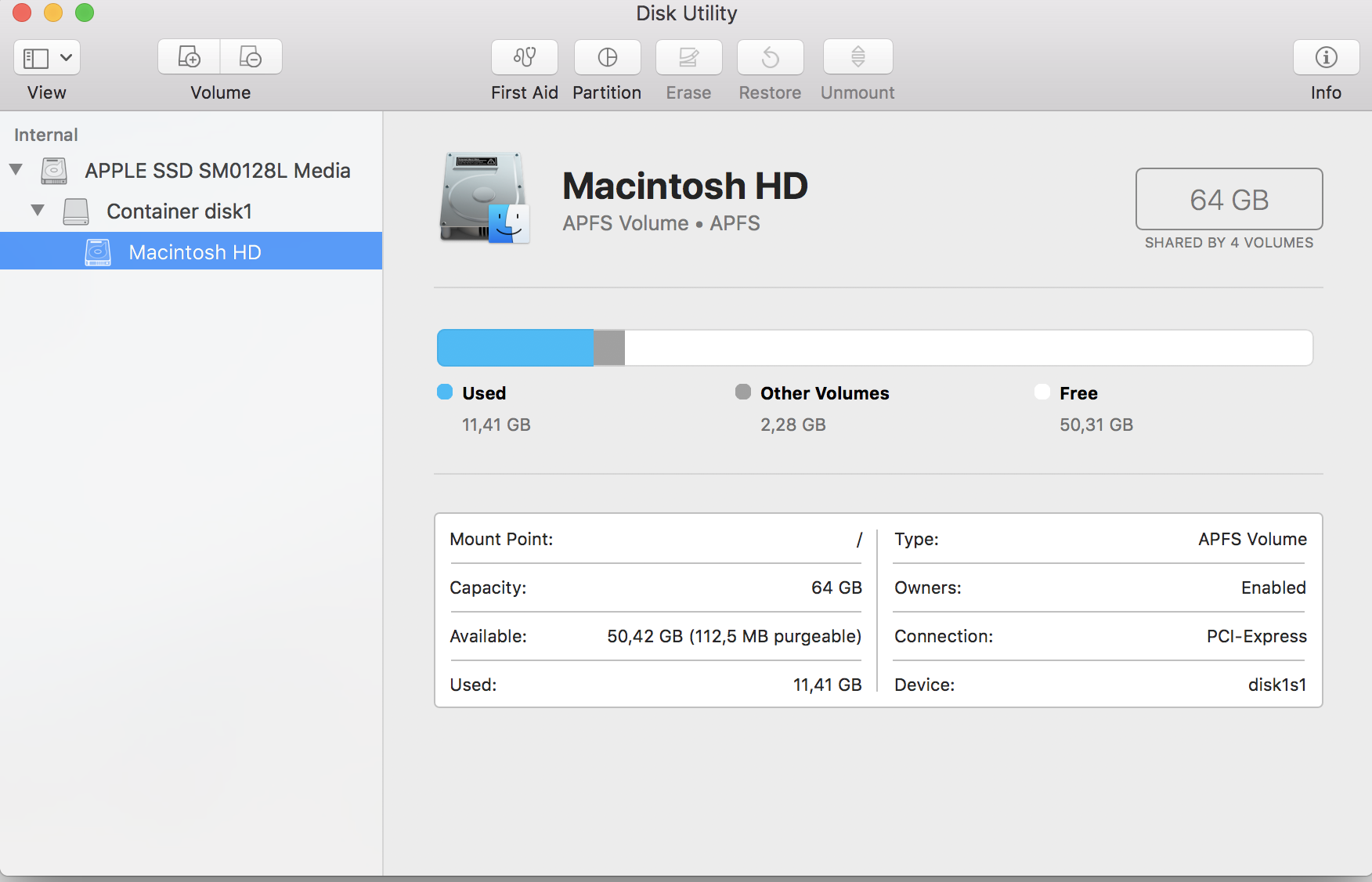The best disk partitions software for Mac that you can download at the moment includes: Paragon Hard Disk Manager for Mac – Best overall. Disk Drill Partition Software – Best for data recovery. Disk Utility – Best for free. GParted (GNOME Partition Editor) – Best open source. Stellar Partition Manager – Best Boot Camp support. Best Free Partition Management Software in 2020. EaseUS Partition Master. EaseUS is one of the very best free partition software in the market today. It gives a host of options to the user, including, create, format, resize, move, split, merge, copy, wipe, check and explore. The reason it is at number one is because it not only works exactly.
- Partition Tool Free For Mac Computer
- Partition Tool Free For Mac Catalina
- Best Free Partition Tool For Mac
- Partition Software For Mac
- Partition Tool Free For Mac Download

So, If you are looking for a tool to partition your Mac hard drive then Partition Magic Mac is one of the best options for you. It is high-tech tool developed with latest techniques and strong algorithm using which easily create partition of your drive within few minutes. The software provides you step-by-step options to easily partition Mac. Partition manager: Yes; Formatted partition recovery: No; 4. Stellar Phoenix Partition Recovery (Windows & Mac) Stellar Phoenix Partition Recovery is a tried-and-tested recovery software application for Windows and Mac that efficiently retrieves lost data from all deleted, hidden, or inaccessible partitions.
Lost valuable data due to reinstallation of Mac OS? Don’t worry, visit company website and download demo version of highly intuitive free partition recovery for mac software to get all data back from PC hard drive in less span of time. Reliable and professional free partition recovery for mac application allowed all class of users to regain favorite audio and video folders that deleted from Macintosh trash using shift-command-delete operation. Easy to operate MAC DDR professional file recovery software enables user in recovering of crucial documents of various extension from formatted or reformatted USB flash drives. Technically powerful free partition recovery for mac tool provides simple and reliable platform to get back all text files, PPT, excel spreadsheets, office files, PDF, etc from logically dmamaged hard disk in easiest manner. Proficient Macintosh DDR professional file recovery application restores all data that was deleted by users accidentally from any capacity and brands external USB drive. Cost-effective free partition recovery for mac program facilitate user to rescue all images and video files after formatting of entire multimedia memory card.
Extraordinary Features:
* Free partition recovery for mac software is easy to use “Do-It-Yourself” program that does not required any specific technical skills to run it and perform restoration task.
* Apple data recovery software get back all missing files and folders from Mac partitions after instances of logically crashed, virus attacks, sudden system shutdown, bad sector in disk, human error, Master Directory Block or media read error.
* Technically powerful Macintosh file salvage application efficiently repairs all picture files and folders after an error message pop up on machine while attach digital camera storage media to PC.
* MAC data restoration utility competent enough to work with all major mackintosh OS versions and hard disk partition based on HTF, HTF+.
Скачать программу Free Partition Recovery for Mac 4.0.1.6 можно абсолютно бесплатно без регистрации по прямой ссылке на странице загрузки.
Creating a separate partition or volume on your Mac can be useful for different tasks as this allows you to designate a part of your hard-drive where you can install new software without allowing it to affect the rest of your system. In most cases, creating disk partitions and volumes is used by early adopters and beta testers of new macOS versions who want to install the beta version of the OS without removing the current stable version.
This is the recommended way of trying out beta macOS versions as it will keep them separate from the rest of your system and if there are any problems with them, this won’t affect the partition/volume where the current stable version of the OS is installed. This way of testing macOS beta versions also makes it easier to uninstall them afterward, once you decide you have tested enough.
Difference between a partition and a volume
Partitions and volumes are very similar and can be used for the same thing but there are some key differences that one must consider before deciding which of the two they are going to make.
What is a partition?
Creating a new disk partition on your Mac practically splits your hard-drive into two separate parts (partitions) that could have different macOS versions or even different OS types (for example macOS and Windows) installed on them. The amount of storage available on these partitions is predetermined by the user when they are partitioning the hard-drive and cannot be changed unless a new partitioning is performed.
Once you partition your hard disk, the overall storage space on your Mac will be separated between the new partitions according to how much storage you have assigned to each partition. If you are intending to create a separate partition for the purposes of installing a macOS beta version or the Windows OS on it, make sure that you assign to it enough free storage space. It is recommended that you assign at least 50 GB of storage to the new partition.
If your Mac has an HFS+ file system (Macs manufactured before macOS Catalina), it is advisable to create a new partition if you want to test macOS beta versions.
What is a volume?

A volume is also a designated data container within your hard-drive, but it is stored within the same partition instead of being a new one. You can still install a different macOS version on it and this will not affect/replace the current stable macOS version that you are using. The advantage here is that you won’t have to worry about assigning enough HDD space to the volume like it is when you’re creating a new partition because the volume would expand the storage space that it uses from the current partition if need be, making it a more flexible option.
For example, if you install macOS Big Sur beta on one of your volumes, that volume would expand to accommodate the new macOS version, leading to a redistribution of the storage space within the partition. Of course, you still need to have the needed free storage space on your Mac as a whole to contain the new macOS version.
For Macs with APFS file system, Apple recommends creating a new volume within your current partition when attempting to install a separate macOS version in addition to your current one.
Always back up!
Every time you are about to make any significant changes in your system, it is best if you back up the data on your Mac to make sure that nothing gets lost in the process. Even though creating a new partition/volume is a safe process, mistakes can always happen, so it’s best to be prepared. There are different ways you could create a backup of your Mac and one of the easiest one is to use Time Machine. You can learn how to back up your Mac using Time Machine on this page (LINK).
Partition Tool Free For Mac Computer
How to create a partition on Mac
- Go to Finder from the Menu Bar at the top and select Applications on the right.
- Open the Utilities folder and start the Disk Utility app.
- Select your current hard-drive from the Disk Utility (it should be the first one from the list and would usually be named Macintosh HD or Fusion).
- Select the Partition tab and click on the Partition button.
- Select the Plus button to add a new partition.
- Use the slider to change the size of the partitions so that the one where you want to install another OS or macOS version has enough space for the installation.
- Give a name to the new partition and choose a system format type. If your current macOS version is 10.13 or higher, it is recommended that you go with APFS. If your current macOS version is 10.12 or older, it is recommended to pick Mac OS Extended.
- Select the Apple button and wait patiently for the process to complete without interrupting it.
Partition Tool Free For Mac Catalina
How to create an APFS volume on Mac
- Go to Finder > Applications > Utilities and open the Disk Utility app.
- Select your current APFS drive from the sidebar (it should be named Macintosh HD by default if it hasn’t been changed).
- Type a name for the volume and pick an APFS format. It is recommended that you go with APFS.
- If you want, you can set size limits for the new volume so that it can’t go below or above certain size parameters. This can be useful if you want to make sure that the volume will never exceed a certain amount of storage space that it can use. To set size limits, click on Size Options.
- Next, enter a Reserve Size value – this will be the minimum storage space that will be available for this volume at all times.
- Enter a Quota Size value to set the maximum amount of disk space that can be used by this volume at any time. Make sure that this value is at least 40-50 GB to ensure that you can install the beta macOS version that you want to test (if this is the reason you are creating the volume).
- Finally, click on OK and then on Add to create the new volume with the parameters you’ve chosen.
How to switch between partitions/volumes

After you create a new partition/volume and install a different version of the macOS on it or an entirely different OS, you can switch between the different partitions/volumes on your Mac and use the different operating systems or macOS versions that are on your Mac.
- Go to the Apple menu (top-left side of the screen) and select the System preferences option.
- Open Startup Disk and then select the Padlock icon in the bottom-left part of the window.
- You will be asked to provide your admin password so do that and select OK.
- Select the OS you want to use after the restart and click on the Restart button.
Best Free Partition Tool For Mac
After the restart, your Mac will boot with the OS/macOS version you have chosen from the Startup Disk window. If you want to test a macOS beta version, this is the one you must pick for the restart.
Partition Software For Mac
Installing macOS beta version
Partition Tool Free For Mac Download
If you are interested in trying out a macOS version that is still in its beta state, you could do that so long as you have a developer Apple ID account. If you wish to learn more about how you can test beta macOS versions, visit this page and read the instructions provided there.